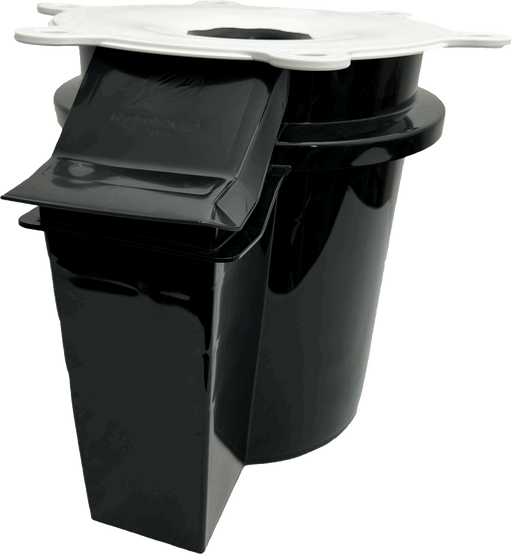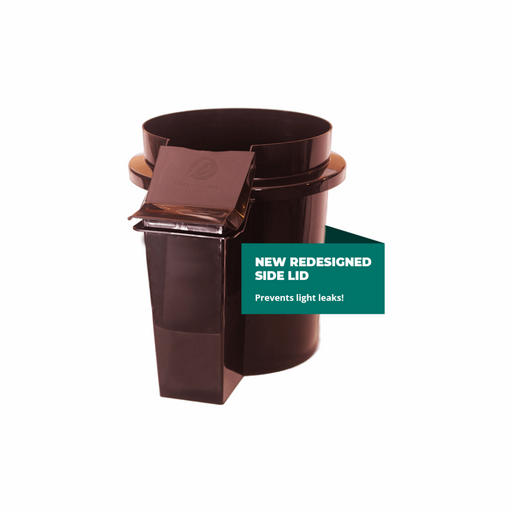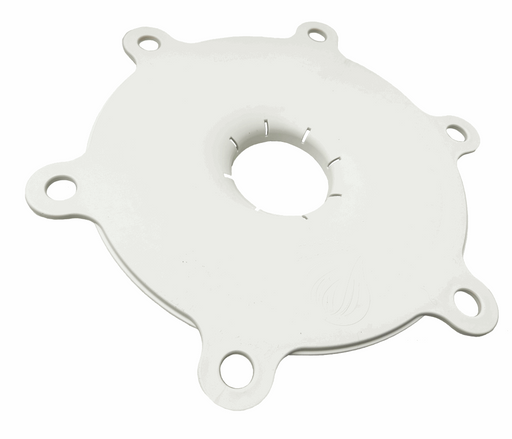
DWC & RDWC Systems Compared
Deep Water Culture & Recirculating Deep Water Culture Systems, Key Points of Difference
DWC & RDWC systems are compared in this article. The reader should note that while both systems are similar in many respects when comparing features and benefits, the key point of difference relates to the recirculating aspect, and what that entails.
What is RDWC?
Recirculating Deep Water Culture (RDWC) is a hydroponic system where nutrient-rich water is continuously circulated through the root zone of the plants. This system ensures that all plants receive a consistent supply of nutrients and oxygen. RDWC hydroponic systems are ideal for larger hydroponic installations as they allow for easy maintenance and monitoring of the nutrient solution across all connected units. The RDWC system uses a water pump to recirculate the solution, creating a homogenous environment for all plants.
What is DWC?
Deep Water Culture (DWC) is a type of hydroponic system where plant roots are suspended in a nutrient-rich, oxygenated water solution. In DWC setups, an air pump provides continuous aeration to the roots, promoting rapid growth and healthy plants. This system is straightforward and efficient, making it a popular choice for hydroponics for beginners. DWC systems do not require growing mediums, allowing roots to have direct access to the nutrient solution.
DWC & RDWC Hydroponic Systems Shared Features
When DWC & RDWC systems are compared, as can be noted from below, there are many beneficial features and fundamentals that are shared.
Bare roots receive uninterrupted access to oxygen, water, and minerals 24/7.
Optimal results are best achieved without the use of growth mediums (i.e., HydroPod with HydroLid).
An opaque container holds the aerated nutrient solution which the roots grow into. A sturdy lid that keeps light out covers the base containing the nutrient solution and supports the plant and planting site(s). Note, containers and lids must be manufactured or made from materials that are suitable for use with plants and nutrient solutions that withstand strong light.
An air pump provides a continuous supply of oxygen and aeration for roots with connected airlines and air stones for each unit in the arrangement.

DWC & RDWC Systems Compared, Key Advantages
The key features found in both DWC & RDWC hydroponic systems offer advantages over traditional growing methods as well as other types of hydroponic systems. Here are a few examples:
Because the water/nutrient solutions that plants need is maintained in a relatively sealed container, there is very little moisture wasted; all water used has been absorbed by the roots and transpired out the leaves, versus evaporating freely from moist soils or growing table surfaces.
There is never any issue with under or overwatering plants; plant roots receive considerably more oxygen in DWC & RDWC setups because they are actively aerated while roots remain immersed in a healthy nutrient solution, stimulating unparalleled rates of growth.
DWC & RDWC systems are excellent performers without the use of growing mediums; while starting seeds or rooting cuttings in a small amount of media is still an option, plants grow best when there is nothing to get in the way of the absorption of healthy nutrient solutions. No more throwing away or buying bulky growing mediums either.
DWC & RDWC setups are clean and hygienic; it’s easy to keep the growing area clean because there are fewer places for insects and plant pathogens to hide when eliminating growth mediums and the mess they can create.
The MAIN Difference Between DWC & RDWC?
Simply, they are the same except RDWC actively recirculates the nutrient solution through the buckets continuously with a water pump while the individual units are plumbed together in a series with piping.
In larger hydroponic installations, this can make it easier to maintain and monitor a homogenous solution between all of the modules (because they are all connected and sharing the same solution).
Typically, there is a “heart” unit in the RDWC series where fertilizers, pH adjusters, etc. are added and monitored from (the heart is connected to all the other buckets in the system). The pump then recirculates the solution through all the buckets continuously (drawing from the heart), creating near identical conditions in all of the buckets.
TIP: An inexpensive plastic float valve can be added to each DWC bucket that feeds from a top-off reservoir. Additions of water and nutrients can be made gradually, as plants demand from the top off reservoir to each of the buckets using this method via simple gravity feed. This avoids the use of a water pump and having to drill out buckets and extensively plumb tubing. Simple, easy, economic, and effective!
Conclusion
Both DWC and RDWC hydroponic systems offer many of the same advantages over traditional and other hydroponic growing methods. The HydroBucket is right at home in either configuration and can be adapted to different scales and complexities of hydroponic installations by growers as needed. Be sure to visit our DWC Blog to learn more or Contact Us for more details or information.
Start Indoor Growing Today!
-
HydroCombo
Visionary HydroponicsOriginal price $84.50Original price $84.50 - Original price $84.50Original price $84.50Current price $67.60$67.60 - $67.60Current price $67.60Maximize your hydroponic gardening efficiency with the HydroCombo, an all-in-one solution for your Deep Water Culture needs. This high-quality comb...
View full detailsOriginal price $84.50Original price $84.50 - Original price $84.50Original price $84.50Current price $67.60$67.60 - $67.60Current price $67.60Sold out -
HydroSeed
Visionary HydroponicsOriginal price $62.98Original price $62.98 - Original price $62.98Original price $62.98Current price $50.38$50.38 - $50.38Current price $50.38Simplify Starting Your Hydroponics Seedlings Introducing the HydroSeed, our all-in-one solution to go from seed to harvest effortlessly, and cultiv...
View full detailsOriginal price $62.98Original price $62.98 - Original price $62.98Original price $62.98Current price $50.38$50.38 - $50.38Current price $50.38Save 20% -
ZoomPak Cure & Store 1/2lb Bags
Visionary HydroponicsOriginal price $39.96Original price $39.96 - Original price $39.96Original price $39.96Current price $31.97$31.97 - $31.97Current price $31.97ZoomPak Cure & Store 1/2lb Bags - 10 Pack The ZoomPak Cure & Store Bags are designed for the discerning horticulturist seeking to pre...
View full detailsOriginal price $39.96Original price $39.96 - Original price $39.96Original price $39.96Current price $31.97$31.97 - $31.97Current price $31.97Save 20% -
HydroBucket
Visionary HydroponicsOriginal price $39.74Original price $39.74 - Original price $39.74Original price $39.74Current price $31.79$31.79 - $31.79Current price $31.79HydroBucket is the answer to your Deep Water Culture hydroponics needs.It streamlines your home growing experience, allowing you to focus on nurtur...
View full detailsOriginal price $39.74Original price $39.74 - Original price $39.74Original price $39.74Current price $31.79$31.79 - $31.79Current price $31.79Save 20% -
HydroLid
Visionary HydroponicsOriginal price $35.95Original price $35.95 - Original price $35.95Original price $35.95Current price $28.76$28.76 - $28.76Current price $28.76Premium Quality Hydroponic Lid for Optimal Fluid Movement and Plant Support The HydroLid is your essential tool for achieving optimal hydroponic gr...
View full detailsOriginal price $35.95Original price $35.95 - Original price $35.95Original price $35.95Current price $28.76$28.76 - $28.76Current price $28.76Sold out





